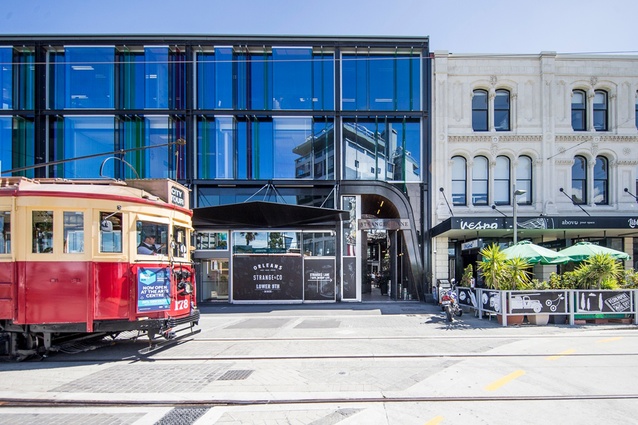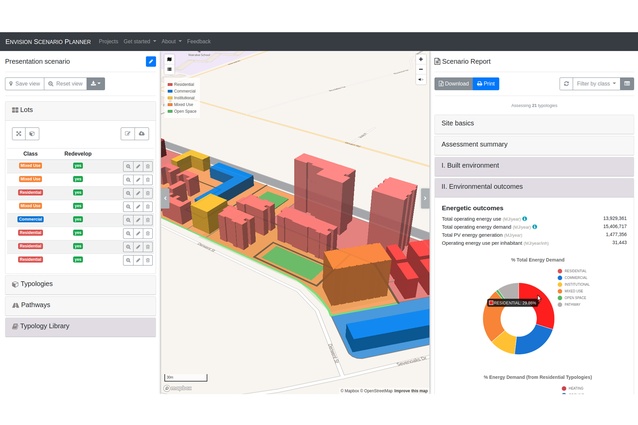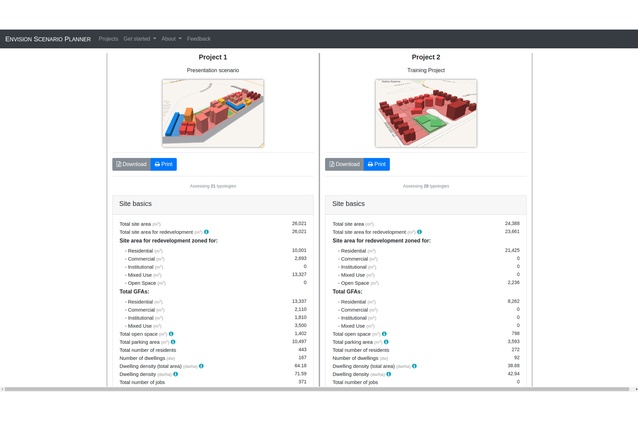Designed to disrupt: A digital tool for urban regeneration
The National Science Challenges are government funded initiatives that are designed to set strategic goals for creating a better Aotearoa. The 11 challenges cover topics ranging from childhood education to ageing and nutrition to ecology.
Researchers in the architecture, urbanism and design fields from universities around the country are working on the Building Better Homes, Towns and Cities National Science Challenge, which seeks answers to questions like: how can Māori design principles be better represented in our built environment? What can future neighbourhoods and communities look like? And many more research areas. ArchitectureNow will be getting updates from the researchers on their findings and what they may mean for the industry going forward.
This month, we hear from researchers in the Next Generation Information programme, which is one of six research areas housed within the Building Better Homes, Towns and Cities National Science Challenge.
We are researchers Rita Dionisio-McHugh and Mirjam Schindler based at the University of Canterbury. Currently, we’re working on the Next Generation Information programme, led by Professor Simon Kingham.

As part of our research, we are developing the Envision Scenario Planner (ESP). It is a free, web-based geo-spatial planning tool that uses digital, evidence-based information to assist the exploration of urban regeneration scenarios at a neighbourhood level.
The ESP was nominated as one of three finalists in the Environment and Sustainability category at this month’s Asia-Pacific Spatial Excellence Awards held at Te Papa in Wellington, and it has recently received high praise for the way it embeds sustainability at every level. It was created to help planners and decision-makers assess the impact that different urban regeneration scenarios, building typologies and open spaces will have on a range of outcomes. These outcomes are based on the three pillars of sustainability: environmental, economic and social.
The ESP algorithm maps the built environment to energy and water usage and integrates it all with socio-economic outcomes to help us figure out ways we can create balance between these trade-offs.
Like all technology, the tool is designed to be disruptive – to challenge and contest the idea of business as usual in urban planning practices. What’s really interesting about it is that the assesments it produces for each different scenario make it possible to see and understand the long-term benefits of environmentally conscious solutions.

We started this work in 2014 in Christchurch, in the wake of the Canterbury earthquake. Being based here, the experience of the Christchurch rebuild has fundamentally shaped the development of this tool and the ongoing research.
When we first began our research, the early stage development of the ESP tool was already underway in Australia. While it was originally designed to be used in both Australia and New Zealand, we quickly identified that there was a unique situation developing in which the tool could be used to address the specific needs of a post-disaster city.
The challenge of rebuilding Christchurch requires a far greater focus on regenerative solutions in the urban environment, and this created the momentum we needed to begin stakeholder-driven research to develop an iteration of the ESP tool for a uniquely New Zealand context.
It was a good time to be developing the early stages of this technology. In the initial two years following the earthquake, urban designers, planners and decision-makers were thinking outside of the box and looking for new ways to regenerate. There was a lot of space for experimentation and asking new questions.
Fast forward to 2018 and our research has engaged stakeholders in many of New Zealand’s major cities, including Auckland and Wellington. It is possible to roll out this technology to local planning authorities nationwide.
The ESP is consistently being refined and re-developed based on feedback from the many local planning authorities we work with, including Christchurch City Council and Regenerate Christchurch.
As well as Christchurch, we’re also talking with Nelson and Hamilton City Councils about integrating the ESP in local practices. The tool was also modified so that it fits within the framework of local authority planning processes and, eventually, can be used nationally. This includes aligning the results of the report with what is needed for consenting processes.
It has also been fundamental for showcasing the benefits of urban intensification in the city centre and mid-suburbs. The ESP tool does this by identifying and prioritising sustainable and resilient development areas under different scenarios. It then raises awareness of their potential impacts and benefits in supporting the balance between environmental, social and economic trade-offs.
In the wake of the Intergovernmental Panel on Climate Change’s climate report released earlier this month, it is now more pressing than ever that New Zealand looks at viable, sustainable options when building neighbourhoods. We need our communities to be carefully considered and constructed in ways that respond to our rapidly changing environment while delivering favourable social and economic outcomes.
Along with helping achieve environmental goals, using the ESP tool in the planning of our towns and cities could also be a vital addition for helping New Zealand address issues of housing affordability. It can help us understand how to make smart decisions when building at density to attain better outcomes at the neighbourhood scale.

One of the most important aims of this tool is to be an easy-to-access mechanism that assists in regenerating the mid-suburbs in our major cities, otherwise known as “greyfield” areas. These are often characterised by low-quality urban environments and demographic decline, with good access to the city centre and existing amenity.
Research shows focusing on increasing density in a well-designed way results in more attractive urban areas and better public social life, which leads to the development of connected communities and a sense of belonging and safety.
We’ve come to learn that some New Zealanders are a bit afraid of density; so having a tool like ESP that brings all stakeholders to the table is a chance to debate the best ways to create our future communities. We hope our work will provide the confidence to developers and communities to make good decisions for out neighbourhoods.
What’s very useful about the tool is that while it informs, supports and validates some of the things New Zealand designers, planners and decision-makers already know, it also quickly brings research-based evidence to a larger group of people. This evidence then becomes a platform for engaging community debate around regenerative solutions.
To achieve sustainability and get the most beneficial environmental, social and economic trade-offs for each particular community, we need to engage different stakeholders and a way to enable these conversations. The ESP tool allows user to create design charettes and pre-design charettes. This means all of the stakeholders in a neighbourhood – community members, developers and businesses – can get together to visualise and assess the outcomes that might occur with each proposed scenario.

Of course, there are already a vast amount of tools to support planners and designers to do what they’re doing in this space. That’s why we’ve been focusing on making the ESP tool fast, easy and efficient. It’s easy to get started and it can be used as is. To provide confidence and reliability of the tool and the work that has gone into developing it, we created a manual, which breaks down the algorithm.
Since June, we have been fully funded by Building Better Homes, Towns and Cities so we are purely research based. There are no intentions for commercialisation.
What’s motivating us is that our research is a critical starting point. What we’re discovering as we build stronger relationships with our stakeholders is that planners and designers have a lot of weight on their shoulders. They are not in a position to contest the current processes because there is just so much to be done. Conversely, new people in planning teams are often more interested in exploring tools such as the ESP.
We’re determined that what we build will continue to evolve to meet the needs of stakeholders. Interestingly, the development of the ESP tool is a very regenerative process in itself and we’re confident that this is just the tip of the iceberg.
Click here for more information about the Next Generation Information research.
The video below exlpains how the ESP works; find out more about the ESP tool here.
Learn more about the Building Better Homes, Towns and Cities programme here.














